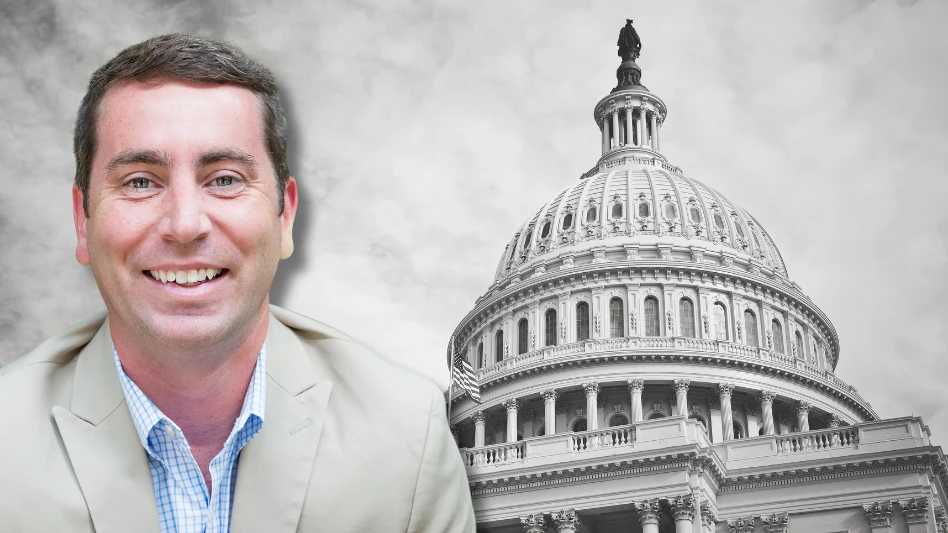 Ken Donaghue knows what it’s like to live without health insurance. When the owner of Showcase Lawn & Landscape in St. Charles, Mo., started his business, he couldn’t afford to insure himself or his family. Yet for the past five years, Donaghue has made covering his family’s health costs a priority, particularly because one of his daughters has an illness that requires medical treatment. But with a price tag of $1,500 a month just for his family, that coverage comes at a steep cost.
Ken Donaghue knows what it’s like to live without health insurance. When the owner of Showcase Lawn & Landscape in St. Charles, Mo., started his business, he couldn’t afford to insure himself or his family. Yet for the past five years, Donaghue has made covering his family’s health costs a priority, particularly because one of his daughters has an illness that requires medical treatment. But with a price tag of $1,500 a month just for his family, that coverage comes at a steep cost.
“We’re unable to reinvest capital in our business because we spend so much on health care,” Donaghue says. “Replacing a piece of equipment might make the business more efficient, but instead we spend a lot of time working on equipment that’s old. We’re at the mercy of the health insurance companies.”
Donaghue isn’t alone. Many landscape business owners admit they’re struggling to afford insurance for themselves, let alone for employees. The problem? Health care is too expensive. Way too expensive.
Bottom Line
And that, small business experts say, is one of the biggest ailments facing a health care system that comprises nearly one-sixth of the nation’s economy. “The bottom line always comes down to cost. That’s the overall challenge. When you look at small businesses, many of them are operating on very thin margins and are just struggling to stay afloat, so the cost of health care coverage for employees and even for themselves can be a big burden,” explains Raymond Keating, chief economist for the Small Business and Entrepreneurship Council, a nonpartisan, nonprofit small business advocacy group.
That’s why, according to a recent Lawn & Landscape survey, 84 percent of landscape contractors do not provide health insurance to hourly or seasonal labor, and 67 percent do not provide it to salaried or yearly labor. Compare that to the national numbers from a June survey by Discover Small Business Watch, which found that 78 percent of small business owners do not offer health insurance to employees.
“It’s not that small business owners don’t want to offer health care coverage to their employees,” Keating says. “They can’t afford to do it.”
Legislators hope health care reform proposals currently being debated in Congress will change that fact. But business owners and the organizations that fight for them on Capitol Hill are growing increasingly concerned that the government’s diagnosis might not help business owners at all – and it may even put some of them out of business.
 Feeling the Pain
Feeling the Pain
One of the main goals of the legislation being debated in Congress right now is providing insurance for the more than 46 million Americans who are currently uninsured. Yet, according to Lawn & Landscape magazine’s survey, more than 41 percent of industry professionals say the government should not provide health care, and 76 percent say that, as employers, they should not be forced to offer health care to all workers. For small business owners in general, 48 percent surveyed for the June Discover Small Business Watch say the country doesn’t need a government-run universal health care option, while 62 percent of companies that currently offer health insurance believe a government mandate would have a negative impact on their businesses.
In particular, the “play or pay mandate” concerns many business owners, who likely would get dinged with requirements that businesses either provide health coverage or pay a tax or fine. With the government in charge of determining what “counts” as health coverage, even some employers who currently pay for part of their employees’ premiums may not be doing enough.
Take Andy Felix of Tree Tech in Foxboro, Mass. Felix, whose 75-employee company brought in just more than $7 million in sales last year, pays 50 percent of his employees’ family or individual health insurance policies through its HMO once they have been with the company 90 days. He’s conscientious about insurance rates and works as hard as possible to keep employees’ expenses down. For 2009, he negotiated a 5 percent increase, instead of the 15 percent rate hike he was expecting, by fiddling with deductibles. Now employees pay $20 rather than $15 for a co-pay, and their surgery deductible increased to $1,000 – but the company will pay that if employees need help.
Rough Requirements
Yet if the House’s proposal as of July 2009 were to pass, it wouldn’t be enough. Under that plan, small businesses must contribute 72.5 percent of their workers’ premiums (or 65 percent for family coverage) – far more than most landscape business owners are able to contribute today. “Fifty percent may be the best you can do, and you and your employee may agree on it. For the government to come in and say you’re not doing enough is really an affront to entrepreneurs,” says Michelle Dimarob, manager of legislative affairs for the National Federation of Independent Business, a small business association in Washington, D.C.
Another issue that Dimarob believes will be particularly important to the landscape industry should current health care legislation pass is the government’s definition of full-time vs. part-time employees – and what requirements it sets for employers funding health coverage for each group of workers. Under one of the proposals being debated in the Senate, businesses with 25 employees or more face fines of $750 a year per full-time employee and $375 a year per part-time employee if they don’t offer coverage.
Adds Dimarob: “Our research has shown that employer mandates for a specific plan or premium all have the same outcome at the end of the day: They cost jobs. An employer mandate can cost 1.6 million jobs in the country – and many are in the small business community. We need to be looking for policies that encourage job growth, not put jobs in jeopardy.”
Support Offered
The current health care proposals do provide support for many small businesses, such as tax credits toward premium costs and statewide buying pools to reduce premiums. Plus, the smallest businesses would be exempt from the health care requirements. Under the House plan, employers are not required to provide coverage if they have less than $250,000 in payroll. Under the first Senate plan released, companies with less than 25 employees would not have to pay for health insurance. Landscape companies with a larger payroll or more employees, however, may be footing anywhere from 60 percent to 72.5 percent of employees’ premiums depending on the proposal that ultimately “wins” in Congress.
Under these proposed regulations, Donaghue’s company would be exempt from mandatory coverage regulations – his business grossed $200,000 last year, and besides he and his wife he only employs one full-time employee (who currently gets insurance from another job). But should Donaghue have to fork over the money to insure additional employees, he’d be in a world of hurt, tax credits or not. “I wouldn’t be able to afford it. If the government says we have to provide insurance, we’ll have to come to terms with not having employees and let people go.”
Paying for it
Another challenge for business owners comes in the form of a proposed personal income tax increase, which could hit the many business owners who pay personal income tax rather than corporate income tax right in the pocketbook. (Original proposals to tax those who earn more than $350,000 a year may be scrapped, however, so only those who make more than $1 million would pay.) And it still doesn’t address business owners’ biggest concern – health care costs.
“The proposals being kicked around that raise rates on upper-income earners are a problem for many small businesses. If you’re taxing them more, that means less capital for investment,” Keating says.
The price tag for the health care overhaul, which numbers over a trillion dollars at last count, has many small business owners squirming too. “Washington has been spending a lot of small business’s money in areas that don’t necessarily benefit them, so now small business owners are nervous about another price tag because it is going to mean more taxes,” Dimarob says. “Small business owners believe you can improve the health care system without coming to the American people and asking for more money.”
A heavy dose of insurance
A major criticism leveled at the current proposals is that, rather than changing the way things work, beneath the surface they simply promote a health care system that looks too much like the one America has now – just with a higher price tag and a few shiny regulations thrown in.
Keating says Americans should be promoting market-oriented solutions – such as offering tax incentives for health savings accounts and allowing individuals and businesses to shop nationwide for the best health plans rather than being confined to their specific state – that “gear themselves more toward choice and competition.”
Dimarob says the small business owners the NFIB connects with have a long list of things they’d like to see changed but haven’t yet. “They want reform that is going to lower cost, increase competition, expand plan choices, and provide an easier, more efficient way for small business owners to shop for insurance,” she says.
All have their merits, but at the top of many landscape professionals’ lists right now is just one: Affordability.

The author is a freelance writer based in Lincoln, Ill. How are you coping with health care costs today? Let us know at nwisniewski@gie.net.

Explore the September 2009 Issue
Check out more from this issue and find your next story to read.




